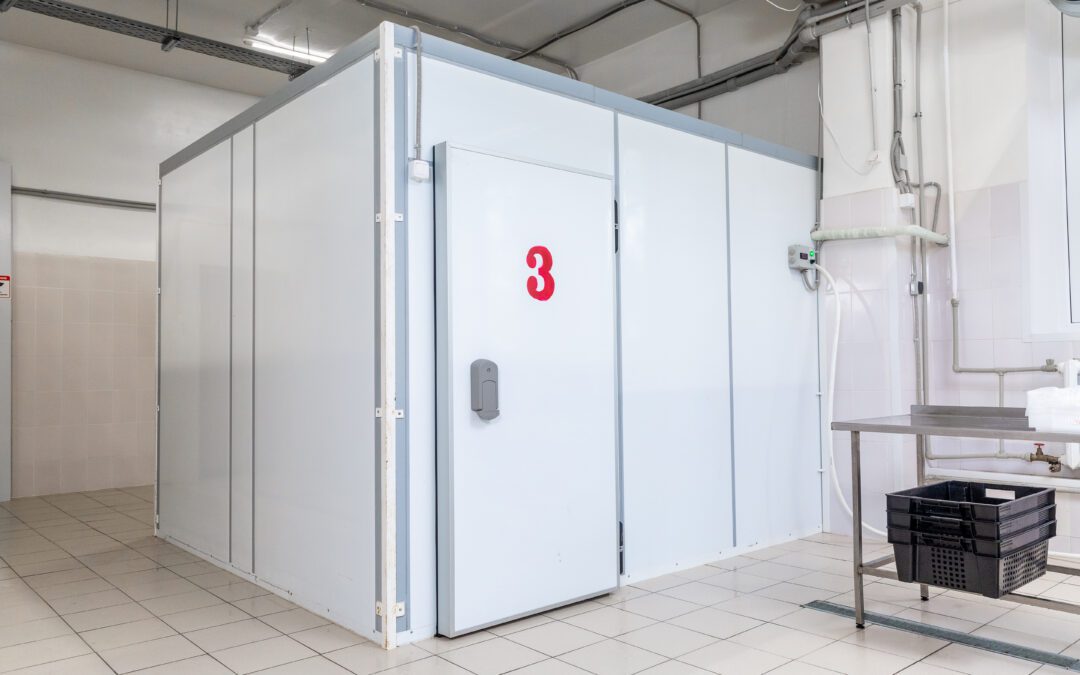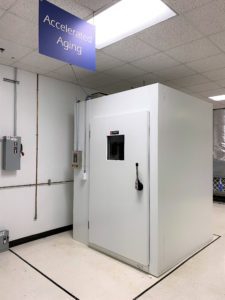WHAT IS STABILITY TESTING?
Stability testing is the process of observing products over predetermined lengths of time in specific environmental conditions to determine if there is any change in the quality. When manufacturing FDA-regulated products, there are numerous factors that must be tested before the product is approved and released to the public for consumption. Manufacturers must take great care to observe the influence of various environmental factors such as light, temperature, and humidity on their product. Looking for professional stability testing solutions? Reach out to our team and get a free quote.
What is Pharmaceutical Stability Testing?
Pharmaceutical stability testing is the process by which drug manufacturers collect data on their product over predetermined lengths of time in specific environmental conditions to determine if there is any change in the quality of the Active Pharmaceutical Ingredient (API) or Final Product (FP). The data pharmaceutical manufacturers collect from stability studies is reported to the FDA so the product may be assigned a shelf-life and approved for release to the public. There are varying testing periods a drug manufacturer may be required to report on depending on how far along they are in production, and the FDA looks to the ICH guidelines for stability conditions.
WHY IS PHARMACEUTICAL STABILITY TESTING IMPORTANT?
Pharmaceutical stability testing is important for determining factors such as a product’s shelf life, optimal storage conditions, retest period, and assuring its overall quality for consumers. During a pharmaceutical stability test, manufacturers observe their product for any changes in the physical, chemical, biological, and microbiological makeup of the substance. All of these elements may impact the safety and efficacy of the product for the consumer, so it is vital to conduct extensive testing before putting a drug or cosmetic on the market.
Learn more about our ICH Stability Chambers for Pharmaceuticals.
WHO DETERMINES THE GUIDELINES FOR STABILITY TESTING OF PHARMACEUTICAL PRODUCTS?
The stability testing guidelines are set by the International Council for Harmonisation of Technical Requirements for Pharmaceuticals for Human Use (ICH). Formed in 1990, the ICH is comprised of regulatory authorities and pharmaceutical professionals for the purpose of discussing scientific and technical aspects of drug registration. As stated on their website, the mission of the ICH is to “achieve greater harmonisation worldwide to ensure that safe, effective, and high quality medicines are developed and registered in the most resource-efficient manner.”
WHAT ARE THE ICH GUIDELINES FOR STABILITY STUDIES?
The ICH sets criteria for stability testing based on three different types of studies: long term stability studies (also referred to as real time), intermediate studies, and accelerated studies. These studies are conducted for different durations of time and are intended to measure a product’s condition at several different stages, such as the length of its proposed shelf life or how it reacts during short-term conditions (e.g. in transport).
The ICH guidelines for the three types of stability testing are as follows:
| Study | Storage Condition | Minimum time period covered by data at condition |
|---|---|---|
| Long Term | 25°C ± 2°C/60% RH ± 5% RH or 30°C ± 2°C/65% RH ± 5% RH |
12 months |
| Intermediate | 30°C ± 2°C/65% RH ± 5% RH | 6 months |
| Accelerated | 40°C ± 2°C/75% RH ± 5% RH | 6 months |
* It is important to note that it is up to conductor’s of the stability study to decide the storage condition for the long term stability testing and if 30°C 2°C/35% RH 5% RH is the long term condition, no intermediate testing is required.
In addition to varying the duration of the stability study, the ICH also sets guidelines for stability studies based on the five climatic zones of the world. The ICH stability guidelines are intended to simulate different climatic conditions to ensure a pharmaceutical product’s efficacy and integrity across all regions of the planet.
The following table describes the climatic zones and the recommended long term stability testing conditions:
| Zone | Description | Long Term Stability Testing Condition |
|---|---|---|
| Zone l | Temperate | 21°C/45%RH |
| Zone ll | Mediterranean/Subtropical | 25°C/60%RH |
| Zone lll | Hot-Dry Zone | 30°C/35%RH |
| Zone lV a | Hot-Humid/Tropical Zone | 30°C/65%RH |
| Zone lV b | Hot/Higher Humidity Zone | 30°C/75%RH |
WHAT IS LONG TERM STABILITY TESTING?
Long term, or real time, stability testing programs subject products to recommended storage conditions and normally utilize a longer monitoring period for degradation to establish product shelf-life. This long term stability testing procedure differs in comparison to accelerated shelf-life testing, which instead exposes products to elevated storage environments. The drug product is monitored under specified storage conditions until it no longer exhibits the expected quality standards. Long term stability testing typically lasts a minimum of 12 months, but may extend beyond that.
Why Would You Need Long Term Stability Testing for Drug Substances?
Long term stability testing is essential for determining the shelf life and storage periods of products under their expected environmental conditions. It provides manufactures and consumers insight as to when products will stop performing as intended. Even if the stability properties of an API are thought to be fully understood, long term stability testing may be utilized if there is a change in packaging or the formulation of the product has been altered.
What Are Accelerated Stability Studies?
In accelerated stability studies, pharmaceutical products are held at exaggerated stress conditions for a period of six months. The elevated conditions are meant to accelerate the rate of decomposition in the product. Conducting accelerated stability studies allows pharmaceutical professionals to then draw conclusions about the shelf life of the product. For instance, if a product holds stable at 40℃/75% RH for the duration of the six-month accelerated study, it can be assigned a shelf life of 24 months. Successful accelerated stability studies can expedite the process of getting a drug on the market, but full approval must be backed by “real-time” data.
Upgrade Your Stability Testing Capabilities Today!
Discover our Stability Testing solutions, designed to comply with ICH, ASTM, and TAPPI standards. Enhance your stability testing with our industry-leading facilities.
What Are Intermediate Stability Studies?
Intermediate stability studies are not always required, but they may be used if a significant change has occurred to the product at any point during accelerated testing. Intermediate studies are designed to moderately increase the rate of chemical degradation or physical changes for a drug substance or drug product.
How is a Stability Study Conducted?
A stability study is composed of many different tests and involves the careful handling and pulling of samples to precisely record their condition at various points in the study. The ICH recommends collecting stability data for at least three batches of product representative of the final quality of product that will be made to production scale.
Criteria for evaluation during a stability study may include tests for:
- Degradation
- Changes in PH
- Dissolution
- Assay
- Moisture content
- Microbial activity
To store these samples at the designated condition for the duration of the study, temperature-controlled humidity chambers and walk-in stability rooms are utilized to precisely control and maintain the desired set point. Failure to maintain the required condition for a stability study may mean a loss of several months or years of work, so it is of high importance to ensure that the equipment is built to exact specifications and will consistently hold the needed temperature and humidity levels. Read more about best practices for a successful accelerated shelf life test here.

How is Stability Data Evaluated?
Stability data must be thoroughly and accurately documented to be evaluated by regulatory bodies like the FDA. It is critical that pharmaceutical manufacturers have data to back up the findings of their study in the event of an FDA inspection. One of the primary pieces of data to be evaluated is documentation confirming that the required conditions were held consistently for the entire length of the study. If a failure occurred during the study, there must also be documentation of this occurrence to report to the FDA. The process of compiling mapping data for the chamber and documentation proving that stability protocols have been followed every step of the way is known as validation. Read more about stability protocols and validation requirements here.
The data for stability studies is recorded through the stability chamber’s monitoring system software. The monitoring system provides real-time data on the chamber’s performance for temperature and humidity, C02 levels, uniformity, and any deviations from the designated set points. This data is typically accessible through either a cloud-based or physical company server and will notify the conductors of the study of any changes to the chamber’s conditions.
What Types of Chambers Do You Need For Long Term Stability Studies?
When acquiring a chamber for a long term stability study, pharmaceutical professionals will want to look for equipment that is stable and will reliably hold the specified conditions first and foremost. The equipment should be durable, proven for accuracy through methodic testing, and adhere to ICH standards. When purchasing a chamber for a long-term stability study it is also important to look for safety features such as high and low temperature deviation recognition, remote monitoring system services, and alarm notifications
Some of the most important considerations for purchasing a stability chamber are known as “The Three C’s”
- Control – A programmable logical microprocessor puts you in control of the chamber. A single multifunction keypad is used for all setpoints. Simplistic – 21CFR Part 11 compliant.
- Conditioning – Chamber must have uniform distribution of temperature and humidity throughout the interior and be capable of recovery from Open Door and Power Downs.
- Construction – Foamed in place insulation for low heat transfer, Enamel exterior finish, stainless interior for easy cleaning, self-closing key lock doors, thermostatically controlled anti-condensate heater wire for door gasket.
Where to Find Stability Chambers For Long Term Stability Studies?
At Parameter, we offer a wide range of environmental stability testing chambers in a variety of sizes to fit your particular industry space needs. Our chambers provide precise control and are durable to ensure that your investment can reliably withstand rigorous long term stability studies. Contact us today to learn more about how Parameter can help you with all your stability testing needs.
Join the growing list of Parameter clients.
Please provide us with some basic information about your needs, and we’ll contact you to begin the quoting process.
If you’d rather start the conversation over the phone or by email, contact our sales department at 828-669-8717 or sales@humiditycontrol.com.


